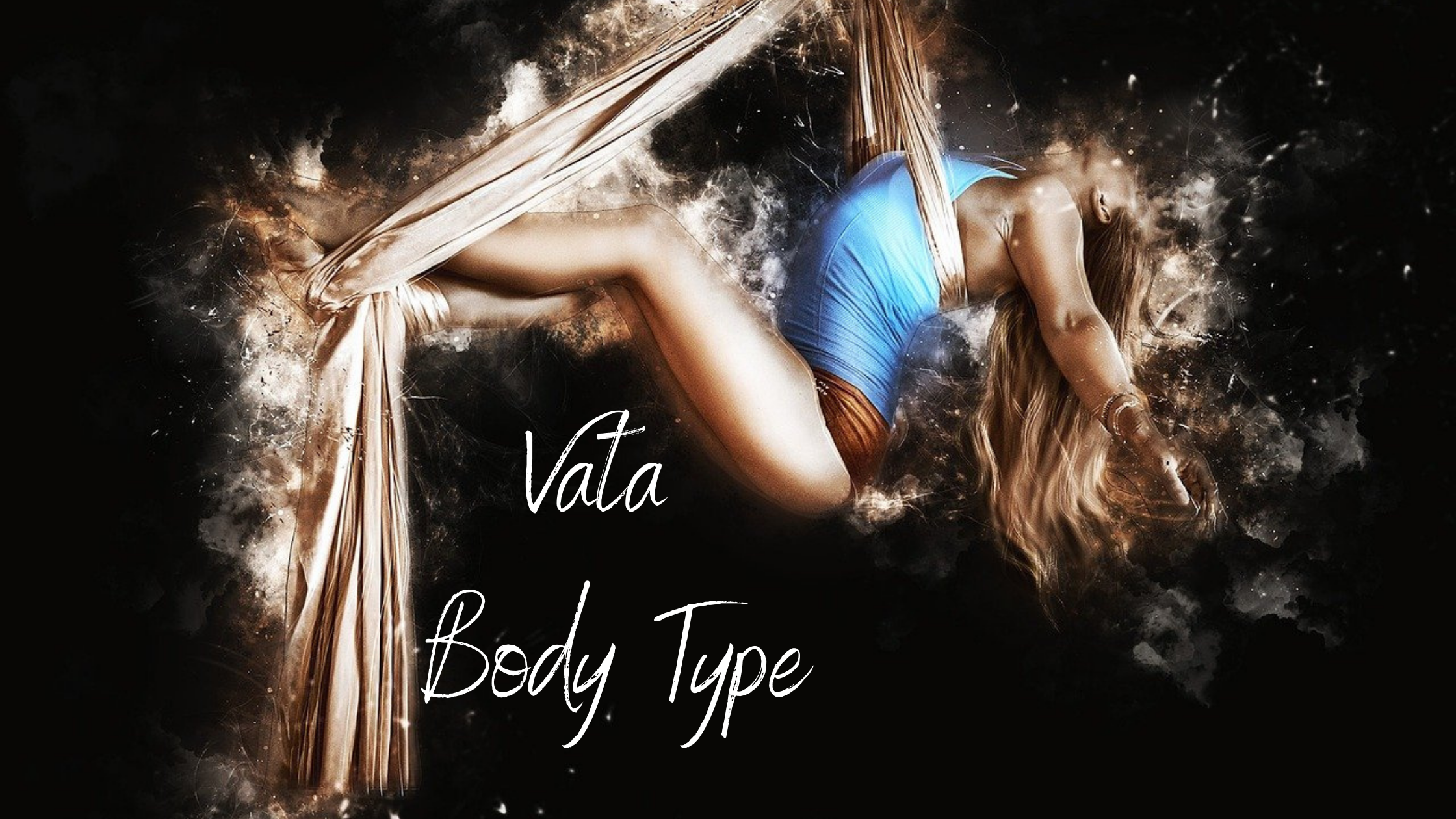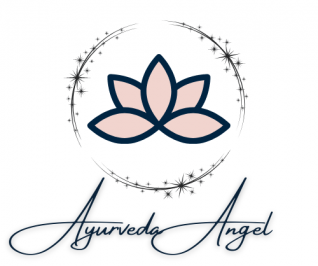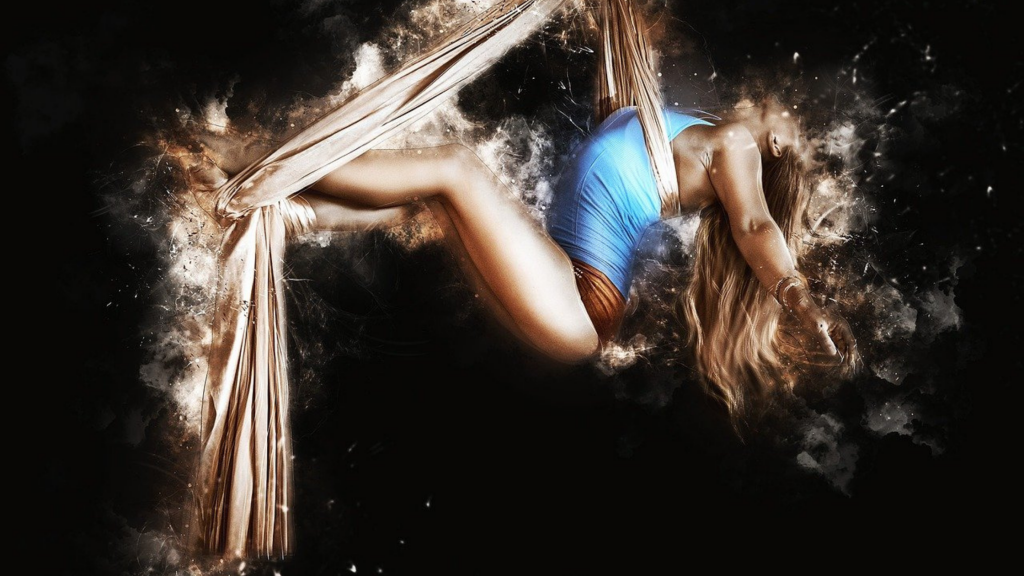If your dominant dosha is Vata, you need to understand the Vata body type.
When I first got into Ayurveda, the first thing I did was take a dosha quiz. And I’m sure your first step was very similar, if not the same.
My results kept coming back as Pitta-Kapha.
I paid such careful attention to my Pitta and Kapha energies, making sure they were balanced, that I completely abandoned my Vata.
And before I knew it, I ended up with a rather severe Vata imbalance.
Knowing your dosha is the first step to creating a more harmonious, balanced life. But you can’t do much unless you understand its nature!
So in this post, we’re diving deep into the Vata body type—what it is, tips for balancing it, physical and personality traits of a Vata-dominant person, and the symptoms of a Vata imbalance.

What Is a Dosha?
In Ayurveda, there are five elements that comprise nature. They serve as the building blocks for everything in the universe, including us.
They are:
- Space (Akash)
- Air (Vayu)
- Water (Ap)
- Fire (Tejas)
- Earth (Prithvi)
Every person will have a different combination of these elements, but two or more elements are predominant. Your most dominant elements then determine your dosha.
Chopra.com defines doshas as the three energies that make up every person’s composition.
These three energies—or, doshas—are Vata, Pitta, and Kapha.
Knowing which dosha you are helps you live a healthier life. Once you become aware of your dosha, you can learn how to balance it.
Here, we’ll be discussing more about the Vata dosha. More specifically, the Vata body type.
But if you aren’t sure what your dosha is yet, then it may be best that you visit an ayurvedic doctor to find out. You can also take a free dosha test online.
Vata Body Type Composition: Air and Space
Out of the five elements, the Vata dosha is composed of air and space. These two elements make movement Vata’s strongest quality and energy.
In fact, Vata is often called the “King of Doshas” because, without movement, life can’t exist. So without Vata’s movement, the Pitta and Kapha doshas wouldn’t be energized.
We can see Vata’s mobile and dynamic qualities manifest in our bodies physically and mentally.
For example, breathing, blinking, heart pulse, and muscle movements are all physical manifestations of the air element.
But excessive movement leads to a Vata imbalance.
Anxiety, insecurity, fear, and racing thoughts are all mental manifestations of movement and symptoms of a Vata imbalance.
And muscle twitching, fidgeting, and palpitations are examples of physical symptoms of an imbalanced Vata.
Because of this, it’s important you’re aware of Vata’s key characteristics. That way, when they become excessive or abnormal, you can spot an imbalance and properly treat it.
So with that said, let’s take a closer look at the two elements of Vata—air and space!
Space
Space—also known as ether—is the first of the five elements.
This is because space represents emptiness, which is needed for the other elements to fill.
Although space represents the concept of nothing, this element still has its own unique qualities.
The other five elements have observable and physical qualities to them. But space’s qualities are based more on the absence of certain characteristics.
For example:
Cold = the absence of fire
Light = the absence of earth
Dry = the absence of water
Still = the absence of air
Notice how each of the other four elements—fire, earth, water, and air—somehow satisfy space’s absences.
Air
Air is the second of the five elements, only behind space.
This element is associated with movement and can be found whenever space becomes active in motion. With this, air represents all movements within us, and in all of the space around us.
Air also represents life.
It allows bodies to move, blood to circulate, thoughts to flow, and lets us go through our lives as we know it. Without air, life can’t exist.
Some basic qualities of air include:
Light
Mobile
Cool
Flowing
Clear
Physical Characteristics of the Vata Body Type
Now that you’re familiar with Vata’s two elements—air and space—let’s get into what a person with dominant Vata dosha might look like.
But before we dive in, it’s important to note that even if your primary dosha is Vata, you might not—and probably won’t—have every quality on these lists.
Everyone is different. These are just the key characteristics that most Vata-dominant people have. The goal isn’t to put yourself in a box. So if you can’t check off every quality listed, that doesn’t mean you aren’t a Vata.
Either Very Tall or Very Short
More often than not, a Vata body type will have a tall and lanky body.
Although commonly tall, Vata doshas can also be rather short. But even short Vatas tend to have a slim build and long limbs, especially in the arms and legs.
Vatas tend to hunch their backs though, so posture usually isn’t a particular strength for them.
Dry Hair and Skin
Due to the dry and cold characteristics of this dosha, a Vata body type is more prone to dry hair and skin. Fortunately, this problem can easily be addressed by following a solid Vata diet, hydrating, and giving yourself a daily ayurvedic massage.
Discomfort in Colder Seasons
Vata’s qualities are very similar to those of winter. Much like this season, Vata is cold and dry.
As a result, when the weather matches, Vata levels may spike too high, leading to an imbalance. A Vata body type is best suited in a warmer and more humid setting.
To combat this, just ensure you’re eating warm foods, dressing properly, and keeping your environment warm.
Mental Fatigue Is Common
When imbalanced, each dosha can experience some type of fatigue.
Kaphas tend to experience physical fatigue, Pittas suffer from emotional fatique, and mental fatigue is common for imbalanced Vatas.
This tends to manifest in anxiety, low self-esteem, insecurity, distractions, the inability to focus, and dizziness. But you might also experience interrupted sleep or extremely light sleep, restlessness, and feeling ungrounded.
Thin, But Eats a Lot
The Vata dosha is often envied by a lot of other doshas. This is because the Vata body type can remain thin even after eating enormous amounts of food. The appetite of a Vata dosha is usually unmatched by others.
Digestive System Is Sensitive
Many Vata-dominant people encounter several digestive problems throughout their lives. A Vata has a more sensitive digestive system because a large part of digestion has to do with movement, one of the key qualities of air.
So when air becomes excessive or limited, issues like gas, bloating, indigestion, and constipation arise.
Personality Traits of the Vata Body Type
Feeling Vata yet?
Now that we’ve gotten the physical characteristics out of the way, let’s take a look at the average Vata’s personality.
Creative
With space and air as the two main elements of Vata, a lot of room is available to create new ideas. Vatas are usually very creative in nature and have a tendency to get lost in their thoughts at times.
Friendly
Vata doshas are known to be very friendly individuals. This is mainly because they tend to be active, spontaneous, and high-spirited. Their bright and joyous auras easily attract other people.
Active
Like air, Vata personalities seem to be all over the place. They’re full of energy and tend to have a more active lifestyle than most. However, be wary. When Vata isn’t managed correctly, this generally positive characteristic can easily turn into restlessness or insomnia.
Fast Speech
Vata body types aren’t that hard to distinguish from other doshas. In fact, a lot of the time, all you have to do is listen to their speech.
Since Vata doshas are naturally active and joyous, their excitement and enthusiasm will often show when they speak. Vatas are known as fast-talkers, further emphasizing their bright personalities.
Impulsive
This characteristic goes hand-in-hand with a Vata dosha’s active nature. Since Vatas are considered one of the most active people, they often give in to their own impulses.
Although harmless at times, they need to manage their dosha well, since Ayurveda has been able to link this impulsive behavior to personal finance problems. For instance, impulse buying and shopping sprees—something my Pitta dosha isn’t too fond of!
Moody
Vata body types are more inclined to mood swings than other doshas. This is mainly due to the high correlation between Vata and mental health.
When Vata is imbalanced, a person may experience severe mood swings along with other issues like anxiety and insecurity.
5 Tips for Balancing the Vata Body Type
An imbalanced dosha can lead to health problems, personal happiness problems, and mental challenges. Therefore, it’s vital you know how to bring it back into balance.
So, how exactly can you do that for the Vata dosha?
Let’s take a look at five ways.
1. Follow a Proper Vata Diet
In Ayurveda, one of the most effective ways to balance your dosha is through what you eat. So as a Vata-dominant person, you want to follow a Vata diet.
And by diet, I don’t mean restricting foods or counting calories.
A Vata diet entails eating specific foods (or types of foods) that pacify the dosha.
For example, since Vata is cold, the foods you need to eat are warm.
First, prioritize eating food that is:
- Moist/oily
- Smooth
- Sweet
- Salty
- Whole (unprocessed)
And avoid eating foods that are:
- Dry
- Rough
- Astringent
- Bitter
- Pungent
- Highly processed
If you’re unfamiliar with the six tastes of Ayurveda, they are sweet, sour, salty, astringent, bitter, and pungent.
Vatas should prioritize eating foods that are sweet, sour, and salty, and avoid foods that are astringent, bitter, and pungent.
2. Get Enough Sleep Every Night
Vatas are naturally active and energetic people. However, this also means that Vata people, more than others, will need sufficient sleep to keep them going.
When a Vata dosha lacks sleep, it’s prone to symptoms like restlessness, fatigue, and psychological disorders. So sleep is a perfect way to make sure that you have enough energy to keep in tip-top shape throughout the day.
3. Give Yourself Massages Regularly
More often than not, an ayurvedic practitioner will recommend getting regular massages to keep your Vata pacified.
To further increase the positive effects, it’s recommended that you use Vata massage oils, as they help warm and relax the body.
Both of these properties are excellent in pacifying Vata.
You don’t have to get a massage professionally, though.
Giving yourself a massage using these oils will still leave you with a lot of health benefits.
To learn more about the different kinds of ayurvedic massages and how to do them at home, read this post.
4. Exercise Regularly
As previously mentioned, Vatas are very energetic. So use this energy to your advantage by exercising regularly.
However, it’s recommended that you exercise moderately. You shouldn’t be tiring yourself out too much. Three to five moderate sessions of exercise per week is the perfect amount for pacifying Vata.
5. Limit Caffeine, Alcohol, and Stimulating Beverages
If you’ve been experiencing any of the symptoms of an imbalanced Vata, then it may be best to lay back on the caffeine, alcohol, sodas, and the like.
But if your Vata energy is balanced, having caffeinated drinks in moderation is perfectly fine. However, when Vata is imbalanced, highly stimulating beverages are known to make the symptoms even worse.
Symptoms of an Imbalance Vata Body Type
So now that you know how to balance (and maintain) the Vata dosha, what does it look like when imbalanced?
Psychological Symptoms
- Anxiety
- Brain fog
- Forgetfulness
- Indecisiveness
- Moodiness
- Sensitivity to loud noises
- Overthinking
- Paranoia
- Irrational thoughts
- Overly impulsive behaviors
Physical Symptoms
- Dry skin/hair
- Headaches
- Fatigue
- Digestive problems
- Insomnia
- Asthma
- Osteoporosis
- Hypertension
- Headaches
- Muscle pains/tightness
- Inconsistent energy levels
- Astringent taste in the mouth
- Sensitivity to cold
- Joint pains
- Cramps
- Panic attacks
- Excessive weight loss
- Restlessness
- Muscle twitches
- Inconsistent sleep patterns
If you’ve experienced any of these symptoms, then it might be a good idea to visit an ayurvedic doctor. An imbalanced Vata can wreak havoc in your life if not pacified.
Plus, use the tips above for guidance.
Just remember, the key to change is consistency.
You don’t have to go all-in at once. It may be better if you start adapting a lifestyle change gradually over time. This way, you get accustomed to the new lifestyle and won’t get overwhelmed by the drastic change.
There you have it—a full rundown of the fascinating Vata body type.
Knowing your dosha is the first step towards a more harmonious life that’s balanced with nature. By living a lifestyle that’s healthy to your dosha, you help it bring you health.
Authors
Andrew Abad Santos is a Filipino freelance writer, who graduated with a degree in Business Administration from the University of Santo Tomas — the oldest university in Asia. If you wish to contact Andrew for freelance writing or business work, please email him at a.laurelabadsantos@gmail.com.
Brooke Bagley is a freelance writer and the founder of Ayurveda Angel.

